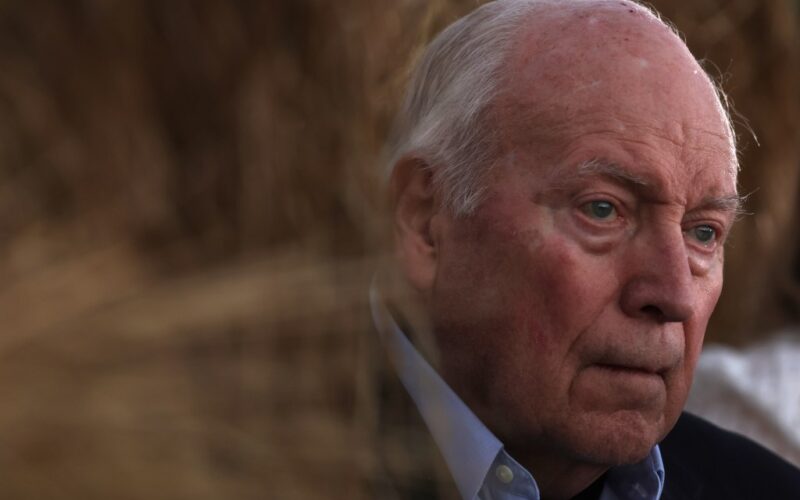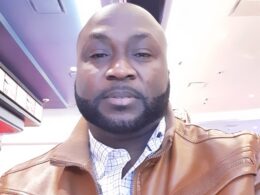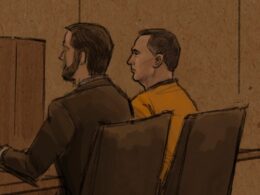Former Vice President Dick Cheney, who under President George W. Bush advocated a muscular take-no-prisoners foreign policy that plunged America into wars in Iraq and Afghanistan, has died. He was 84.
Cheney died Monday night with his “beloved wife of 61 years, Lynne, his daughters, Liz and Mary, and other family members” by his side, according to a statement from the Cheney family. The cause of death was listed as complications of pneumonia and cardiac and vascular disease. He had struggled with his health for years.
“For decades, Dick Cheney served our nation, including as White House Chief of Staff, Wyoming’s Congressman, Secretary of Defense, and Vice President of the United States,” the statement said.
“Dick Cheney was a great and good man who taught his children and grandchildren to love our country, and to live lives of courage, honor, love, kindness, and fly fishing,” it continued. “We are grateful beyond measure for all Dick Cheney did for our country. And we are blessed beyond measure to have loved and been loved by this noble giant of a man.”
As Bush’s right-hand man, Cheney came to be regarded as the most powerful vice president in U.S. history. He left the White House in 2009 a deeply unpopular figure, scarred by the Bush administration’s military failures and perceptions that he championed torture.
Cheney’s fingerprints touched decades of Republican foreign policy. But he turned sharply against the GOP after the election of the isolationist President Donald Trump, and earned a measure of respect in some Democratic circles with his forthright public criticism of Trump.
After Trump falsely claimed to have won the 2020 presidential election and inspired the Jan. 6 attack at the Capitol, Cheney called Trump a “coward” and declared that a “real man wouldn’t lie to his supporters.”
Cheney’s brand of conservatism was a swashbuckling, frontier ideology that preferred an expansive role for the U.S. on the world stage.
At home, where he exerted lesser yet still significant influence, the gun-loving Cheney advocated for light corporate taxation and deregulation of the energy sector. He parted company with Bush on gay marriage; while Bush opposed it, Cheney said, “Freedom means freedom for everybody.”
In 2006, during Bush’s second term, Cheney shot an acquaintance, Harry Whittington, with an Italian 28-gauge Perazzi shotgun while quail hunting in southern Texas. Pellets fired from the gun lodged in Whittington’s face and near his heart and sent him to intensive care. Whittington survived and lived for another 17 years.

Throughout Bush’s presidency, Cheney took a central role in building American foreign policy. And after 9/11, the vice president played an instrumental part in communicating intelligence reports that Iraq’s leader, Saddam Hussein, had obtained weapons of mass destruction and might use them against the U.S. and its allies.
The reports undergirded America’s decision in 2003 to launch the Iraq War. The conflict ultimately cost the U.S. more than 4,000 troops and $700 billion, but it did not lead to the discovery of weapons of mass destruction in Iraq. America fought the war in tandem with the Afghanistan War, launched in 2001 against the country’s ruling Taliban, who had offered sanctuary to the architects of the Sept. 11 attacks.
Though the Iraq War was waged, in part, on unfounded premises, Cheney later defended America’s role. He said that Iraq had been a locus of terrorist activity, and that the Iraqi government was working with Osama bin Laden, the mastermind behind 9/11.
“I think it was the right thing to do,” Cheney told MSNBC in 2015. “Our objective was to take down Saddam Hussein. We did that.”

Cheney was likewise firm in his defense of interrogation methods used by the CIA against terrorism suspects after 9/11. In the Obama years, a Senate Intelligence Committee report described the techniques — which included waterboarding — as brutal and ineffective. President Barack Obama himself said the program had “crossed a line” and veered into “torture.”
Cheney countered in a 2014 interview with NBC that “torture was what the Al Qaeda terrorists did to 3,000 Americans on 9/11,” adding that there was “no comparison between that and what we did with respect to enhanced interrogation.”
He bristled especially at the idea that the techniques did not work, saying that the program bore fruit. “I’d do it again in a minute,” he told NBC.

Cheney’s influence waned in the second George W. Bush term as his policies grew unpopular and the U.S. economy fell into a brutal recession. He and Bush left office on strained terms.
Richard Bruce Cheney, son of a government soil conservation worker, was born on Jan. 30, 1941, in Lincoln, Neb., and raised in Casper, Wyo.
He flunked out of Yale, later receiving degrees from the University of Wyoming. Along the way, he married his high school sweetheart, Lynne Vincent, and avoided service in Vietnam, obtaining five draft deferments.
He began his career as a congressional intern and worked his way up to serving in the White House in the Republican administrations of Presidents Richard Nixon and Gerald Ford.

At age 34, Cheney became Ford’s chief of staff, making him the youngest person ever to hold the position. After President Jimmy Carter won the White House, Cheney headed to Congress, where he served for a decade as a representative from Wyoming.
He earned respect for his work as defense secretary during George H. W. Bush’s presidency, in part through his leadership in the 1991 Persian Gulf War. In the conflict, a U.S.-led coalition won a swift victory over Iraq, which on Saddam’s orders had invaded its neighbor Kuwait. Cheney argued against extending the campaign with a unilateral invasion of Iraq’s capital, Baghdad, saying that the move would have created a “quagmire.”
After voters turned the elder Bush out of office in 1992, Cheney worked at a think tank and led Halliburton, a giant Texas-based oil company. But he did not stray from Washington for long.
When George H.W. Bush’s son needed to select a running mate in his 2000 run for the White House, the younger Bush sought help from his father’s old adviser, asking Cheney to lead the search.
Cheney interviewed and vetted a field of candidates. After reviewing the options, Cheney picked himself.
With Daily News Staff








